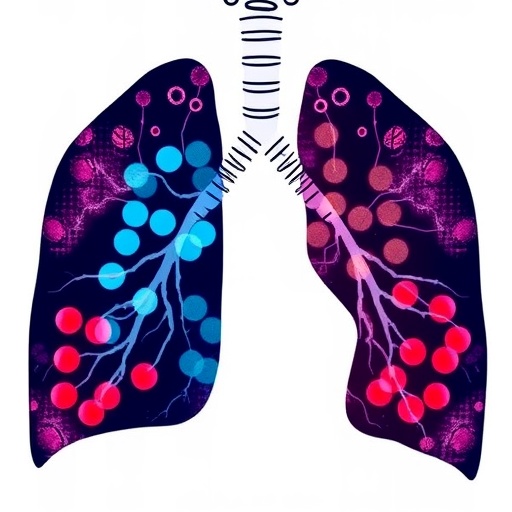In a groundbreaking study published in the esteemed BMC Nursing journal, the pressing issues of toxic leadership and its detrimental effects on the quality of work life for nurses have been meticulously examined. The research, led by Tawfik, El-Ashry, and Atalla, delves into the nuanced dynamics of workplace environments, particularly how negative leadership styles can profoundly influence nurses’ job satisfaction, mental health, and overall well-being. With the evolving healthcare landscape, it has become increasingly crucial to address these underlying factors that contribute to a culture of toxicity, ultimately affecting patient care and outcomes.
Toxic leadership is characterized by a style that is self-centered, manipulative, and often condescending. Such behaviors not only undermine team morale but also create a stressful work atmosphere where employees feel undervalued and demoralized. The adverse effects of toxic environments extend beyond individual feelings; they encompass poor job performance, increased attrition rates, and heightened incidences of burnout among healthcare professionals. In this study, the researchers highlight these ramifications by meticulously documenting their findings and analyzing qualitative and quantitative data from various healthcare settings.
Within the context of nursing, where stress levels are inherently high due to the nature of the job, the impact of toxic leadership becomes even more pronounced. Nurses are often on the front lines, providing critical care and support to patients while managing their own emotional and physical burdens. The researchers argue that toxic leadership exacerbates these challenges, leading to poor quality of work life that can compromise healthcare delivery. By cultivating an understanding of how toxic leaders operate, healthcare organizations can begin to implement strategies to mitigate these harmful influences.
The strength of this study lies not only in its examination of toxic leadership but also in the introduction of nurses’ agility as a moderating factor. Nurses’ agility refers to their ability to adapt quickly and effectively to changes in their work environment. This includes everything from dealing with high-stress situations to balancing multiple responsibilities in a dynamic healthcare setting. The researchers propose that promoting nurses’ agility could serve as a buffer, helping to offset some of the negative impacts of toxic leadership on their quality of work life.
Through extensive data analysis, the findings illustrate a clear correlation between toxic leadership styles and decreased levels of nurses’ agility. When leaders dominate through fear or manipulation, it discourages open communication and stifles nurses’ willingness to engage in adaptive practices. Conversely, fostering an environment where leaders support and empower their teams can enhance nurses’ abilities to navigate challenges and ultimately contribute positively to their work experiences.
Moreover, the study emphasizes the importance of training and development programs focused on leadership quality in healthcare settings. By equipping leaders with essential interpersonal skills and emotional intelligence, organizations can foster a culture that promotes collaboration, respect, and positivity. This, in turn, can enhance employee satisfaction and productivity, leading to better patient outcomes.
The implications of this research extend far beyond the confines of nursing. As healthcare systems continue to grapple with staffing shortages and high turnover rates, understanding the nuances of leadership effectiveness becomes imperative. This study not only contributes valuable insights to the literature on healthcare leadership but offers practical recommendations for improving work environments across the field.
Additionally, the timing of this research is particularly relevant in the wake of ongoing global challenges. The COVID-19 pandemic has significantly stressed healthcare professionals, highlighting the need for sound leadership practices that prioritize staff well-being. As hospitals and health systems strive to rebound from such unprecedented challenges, investing in leadership development initiatives could play a vital role in rebuilding healthier work environments.
An interesting finding of the research is that organizations that prioritize the well-being of their nurses tend to experience lower turnover rates and higher employee engagement. When nurses are supported by positive leadership, they are more likely to engage fully with their patients, leading to enhanced quality of care. This relationship between leadership, nurse satisfaction, and patient outcomes cannot be understated and serves as a critical area for future research.
Future studies could explore how nurses’ agility, in turn, influences resilience and adaptability within their teams. Understanding this reciprocal relationship might provide additional strategies for cultivating positive work environments. The ongoing dialogues around assistant staffing models and innovative care delivery could also benefit from insights gleaned from this research, as effective leadership becomes even more essential in such transformative times.
As we move forward, stakeholders in healthcare must consider these findings and prioritize effective leadership styles that nurture, rather than hamper, the work experience of nursing professionals. The implications of toxic leadership on quality of work life in nursing is clearly a rich area for continued exploration, with the potential to shape policies, practices, and educational programs.
The commitment to creating healthier work environments should be a joint effort by healthcare administrators, policymakers, and educational institutions. Addressing the essence of toxic leadership and cultivating nurses’ agility presents a unique opportunity to foster a more resilient healthcare workforce. By working together to break the cycle of toxic leadership, the healthcare community can pave the way for a brighter, more sustainable future.
Ultimately, the research conducted by Tawfik and colleagues serves as a clarion call for actionable change in healthcare leadership. Through awareness, education, and practice, it is possible to create environments where nurses can thrive, thus ensuring that the system can deliver on its promise of high-quality care. The findings are not simply academic; they have real-world applications that could positively change the lives of countless nursing professionals and the patients they serve.
As we digest the findings of this important research, it becomes clear that the journey toward improving workplace quality for nurses is intertwined with addressing leadership issues. Each step taken toward understanding and rectifying toxic leadership can pave the way for healthier healing environments. The role of leadership is pivotal, and it is within our grasp to create a supportive framework for our nursing workforce. The future of healthcare depends on it.
Subject of Research: Toxic leadership and quality of work life in nursing
Article Title: Toxic leadership and quality of work life: the moderating role of nurses’ agility
Article References:
Tawfik, A.F., El-Ashry, A.M., Atalla, A.D.G. et al. Toxic leadership and quality of work life: the moderating role of nurses’ agility.
BMC Nurs 24, 1172 (2025). https://doi.org/10.1186/s12912-025-03776-5
Image Credits: AI Generated
DOI: 10.1186/s12912-025-03776-5
Keywords: Toxic Leadership, Quality of Work Life, Nurses’ Agility, Healthcare Leadership
Tags: addressing toxic work cultureattrition rates in nursingburnout among healthcare professionalseffects of negative leadership stylesimpact on patient care and outcomesimproving nurse well-being and performancenurses’ job satisfaction and mental healthqualitative and quantitative research in nursingstress in nursing environmentsteam morale and leadershiptoxic leadership in nursingworkplace toxicity in healthcare





